How To Make A Photoshop Layer Black And White
Turning a color image to black and white can be done in many ways on Photoshop. This depends on how much of the image you want to exist converted, and how much command yous need to adjust the conversion. Here is all you lot need to know about how to make a layer black and white in Photoshop.
To make a layer black and white in Photoshop, follow these steps:
- Select the layer y'all want to convert to black and white in the Layers Panel.
- Get to Layer > New Adjustment Layer > Black & White.
- Adjust the luminance value of each color range to change the wait of your black & white aligning.
When making a layer blackness and white y'all are either removing the saturation (color) or yous are converting the colors to black and white. In Photoshop, there are a variety of ways to do this besides the regular black and white adjustment layer. The method you choose ultimately depends on how you want the effects to announced in your projection.
To layout all the options on the table, allow's get into converting layers and images into black and white using a handful of beginner-friendly techniques.
How To Make A Single Layer Blackness And White
The best way to make an entire layer black and white is to create a new aligning layer that converts the paradigm to black and white. This method allows yous to command the contrast of the black and white layer. You tin also manipulate the image to only have certain parts in black and white.
To create a black and white adjustment layer, navigate to the Adjustments panel and select the "Blackness & White" icon. This will create a new layer in the Layers console.
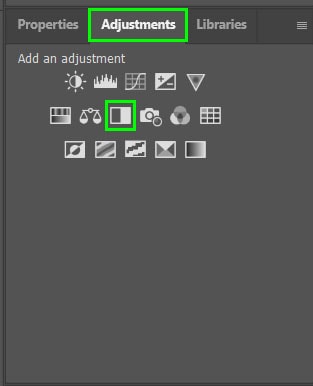
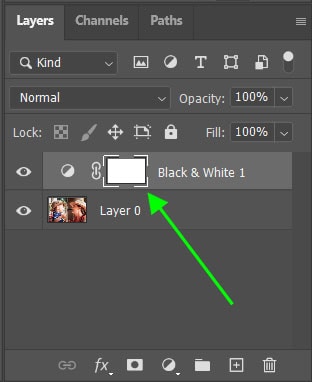
You lot tin can also use the aligning layer icon at the lesser of the Layers console and select "Black & White…" to create the new aligning layer.
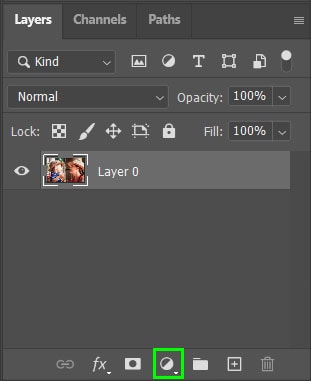
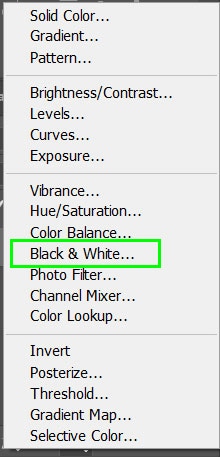
Once the new adjustment layer has been created the image will now be in blackness and white. The Properties panel will besides appear above the Layers panel with options to adapt the luminance of unlike colour ranges.
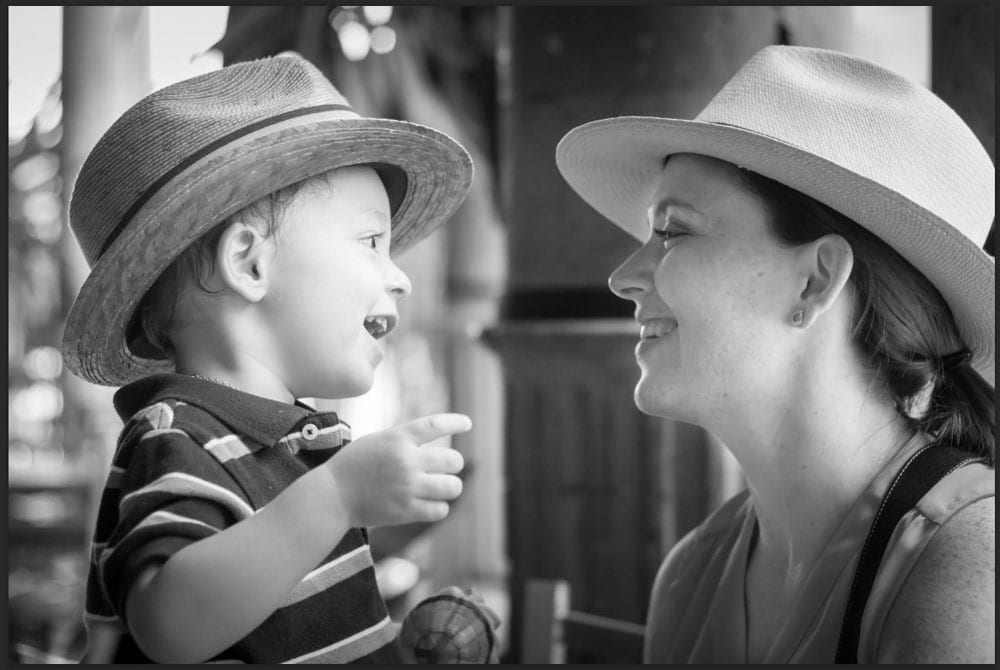
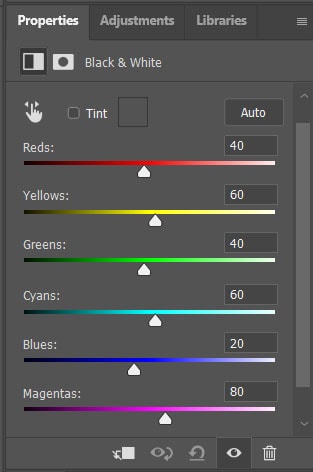
Adjusting the colors in the Backdrop panel will alter the luminance of the image by making certain areas darker or lighter. Slide a color to the right to make it lighter on the image or to the left to make it darker. Moving the "Dejection" color down to -41 makes the child'south shirt a darker shade.
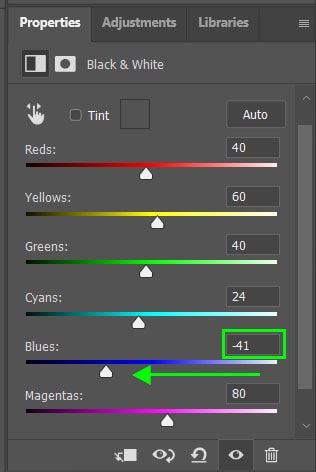

To view the changes you accept fabricated to the aligning layer, hold in the toggle icon at the bottom of the Backdrop panel or hold in "\".
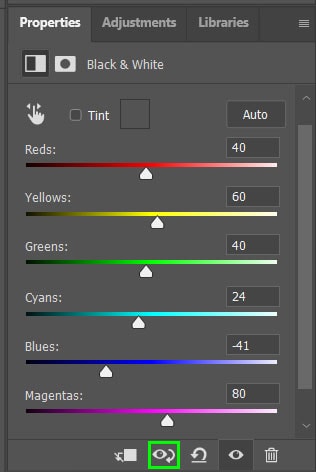
If you lot are unhappy with your changes when adjusting the colors, y'all can easily revert to the default colors by selecting the "Reset to adjustment defaults" icon next to the toggle icon.
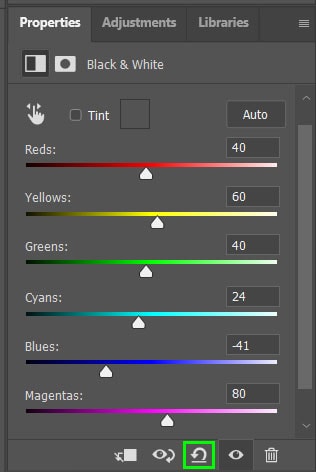
Photoshop volition also automatically conform the colors for y'all if yous would like. Select the Motorcar button above the colors to create an automatic aligning of the colors.

Using A Clipping Mask To Isolate Black & White Adjustment Layers
If you have multiple layers in your image, the new black and white aligning layer volition catechumen all the images below it to black and white. This can be a trouble if y'all are simply wanting to catechumen a unmarried layer without affecting the rest of the project.

To but add black and white to ane layer, add the adjustment layer on top of the other layers. Select the adjustment icon at the bottom of the Layers panel and select "Black & White…" to create the new layer. Your entire paradigm will now be black and white.
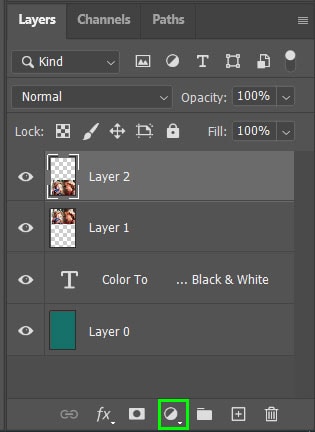

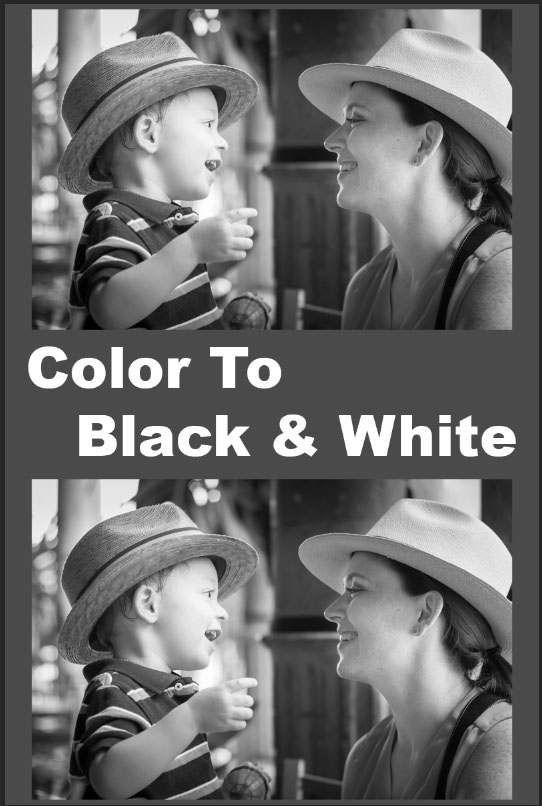
Make sure the new aligning layer is directly higher up the layer you would like to go along in black and white. The other layers, even if they are below this layer, volition remain in colour.
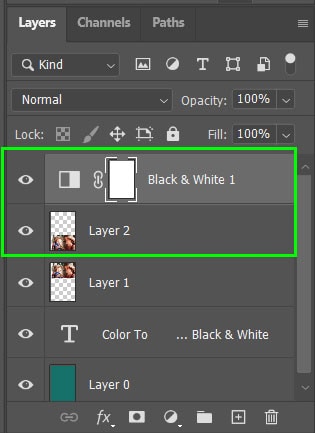
So, select Layer > Create Clipping Mask or press Alt + Control + G (Windows) or Option + Command + Thou (Mac). This will add together a clipping mask to the new adjustment layer which only applies the effect to the layer directly below it. The clipping mask is shown by the pointer icon on the adjustment layer.
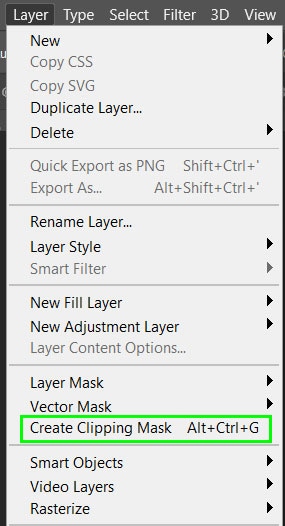
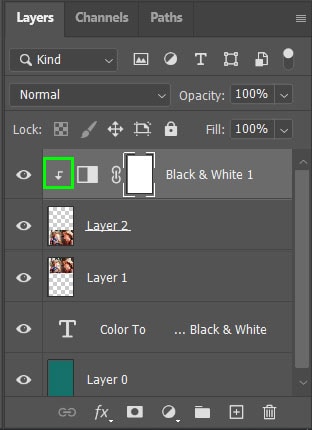

How To Make Parts Of An Prototype Or Layer Blackness And White
The black and white adjustment layer tin exist used to change certain parts of a layer without affecting the entire image when using layer masks. Hither are two methods to make parts of a layer blackness and white.
1. Using A Gradient
A gradient can be practical to the new adjustment layer to make only part of the image black and white. Kickoff, add together a new adjustment layer by selecting the adjustments icon at the lesser of the Layers panel and selecting "Blackness and White…".


When the new adjustment layer is added, information technology already has a layer mask attached to information technology. The layer mask is shown by the white box abreast the adjustment layer. Select the layer mask by clicking on it, the selection will be shown by the white frame effectually the thumbnail.

When yous edit the layer mask you will either reveal or hide elements of the layer beneath information technology. By adding black to the mask yous will hide the adjustment, while white will make it visible.
Add a gradient by selecting the gradient tool from the toolbar. You can too press G.

One time the gradient tool is selected, change the gradient style by clicking on the dropdown menu on the options bar. Select a foreground to transparent slope. And then click and drag beyond your epitome where you would like the gradient to be.

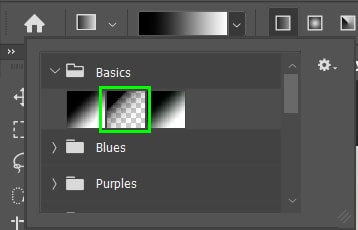

The image will now have a gradient effect on the blackness and white aligning layer. Y'all will see the parts of the lesser layer revealed where the blackness shows on the layer mask thumbnail.
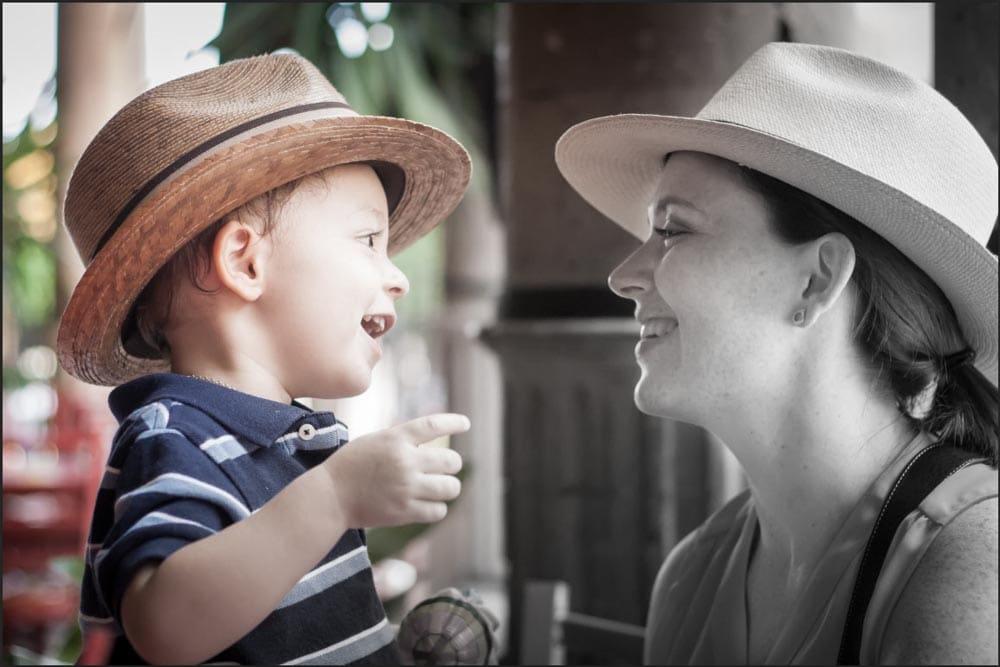

The blackness areas in the gradient remove the blackness and white layer to reveal the original layer. The white areas will hide the original layer and prove the new adjustment layer in those areas.
2. Using A Pick
It is too possible to select specific elements in your prototype to alter to black and white. Yous can do this by selecting objects and just adding the new adjustment layer to those selections.
To convert specific selections to blackness and white, choose the quick selection tool from the toolbar or press W. The quick selection tool will work on complex-shaped objects.

Select the objects you want to change to black and white by clicking and dragging in the confines of the objects you want to be selected.
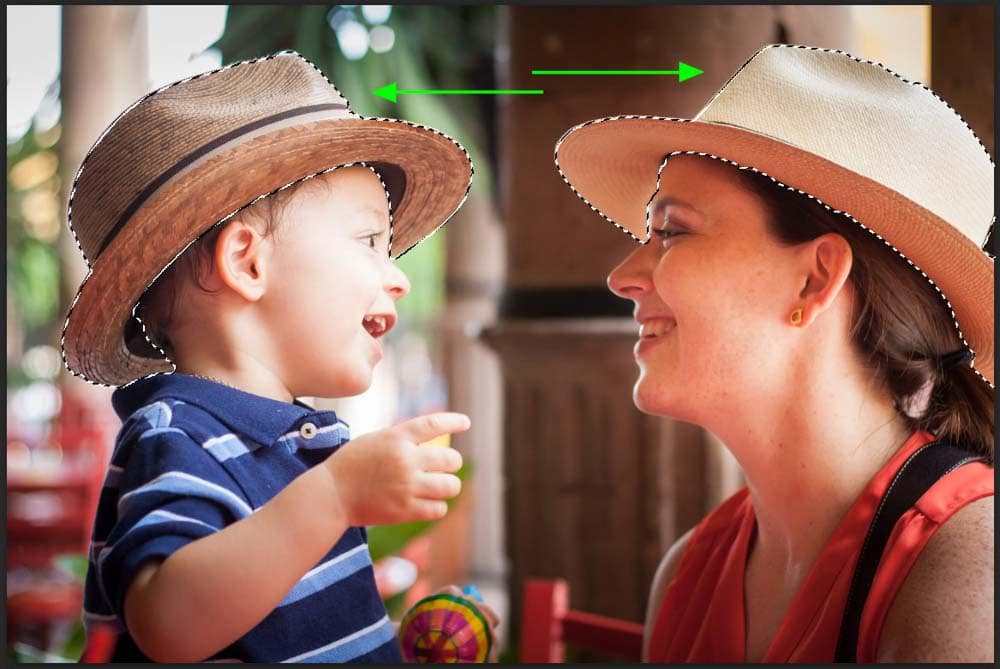
Now, add your black and white adjustment layer by selecting the icon at the bottom of the Layers panel and selecting "Black and White…". Your paradigm will now testify the selected areas in black and white.



The areas that have been converted to black and white are shown on the layer mask of the Black & White layer. The white area shows where the new layer has been added and the blackness expanse is where the color layer is still visible.

If yous desire to invert your selection to have the hats in colour while the rest of the image is blackness and white, invert the selection. Once you have made the choice around the hats, navigate to Select > Inverse or press Shift + Command + I (Windows) or Shift + Command + I (Mac).
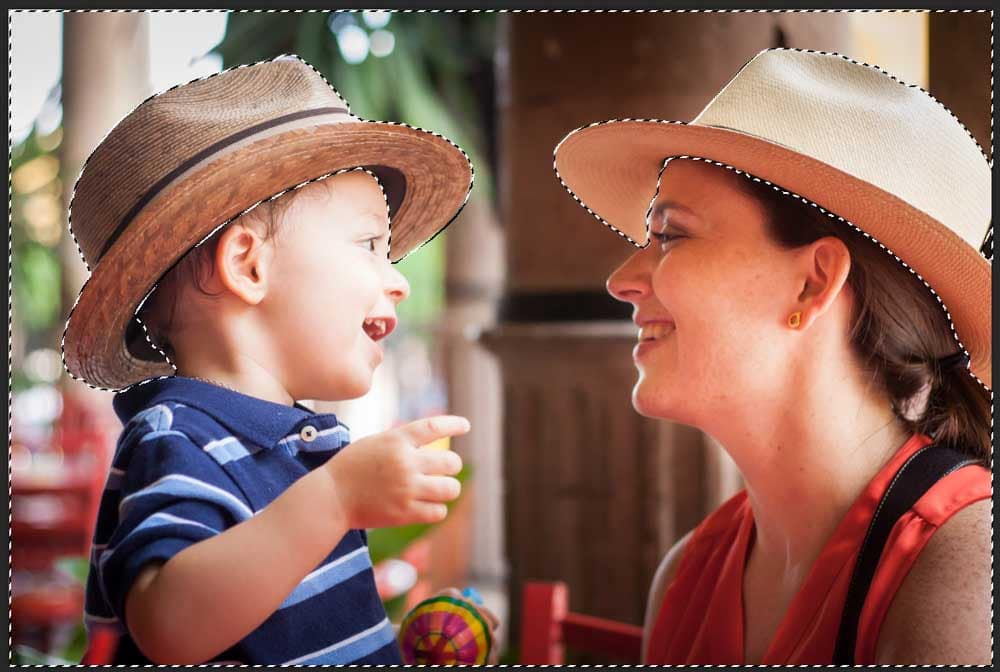
Now when you add the blackness and white adjustment layer, the hats will remain in colour, with the residuum of the image in black and white.
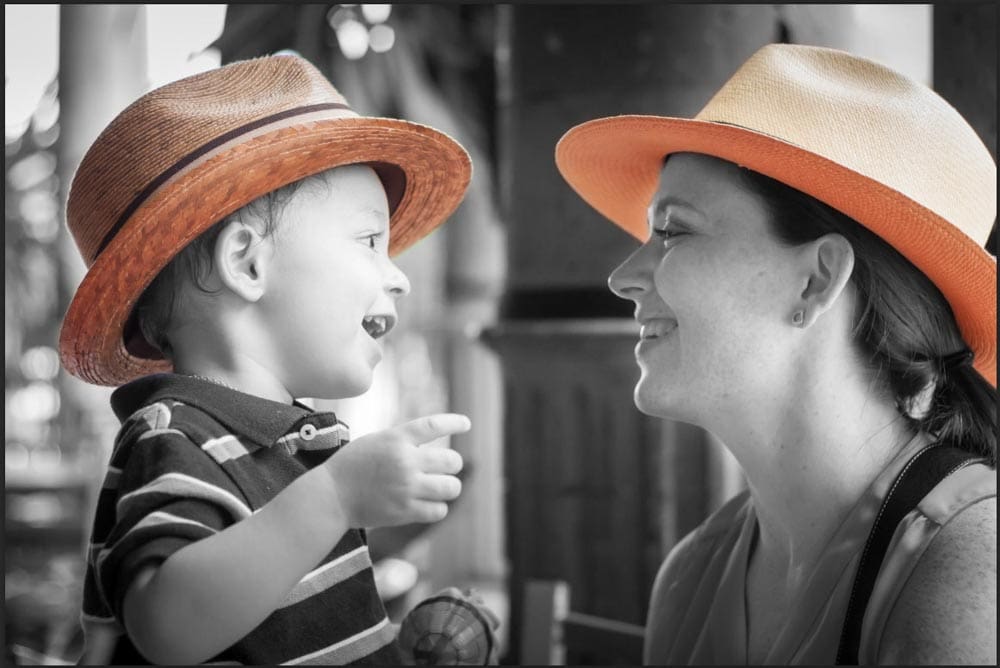
Another way to invert the selection is to select the layer mask. The pick is shown by the white edge around the thumbnail. Then printing Control + I (Windows) or Command + I (Mac) to invert the black and white areas with the color areas. Y'all will run into the modify on the layer mask.
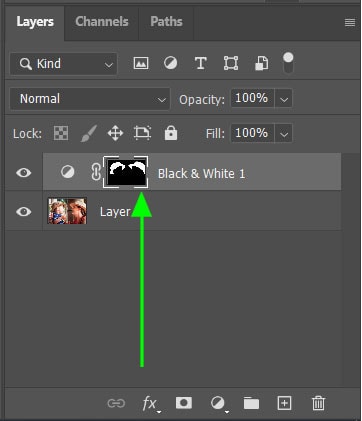
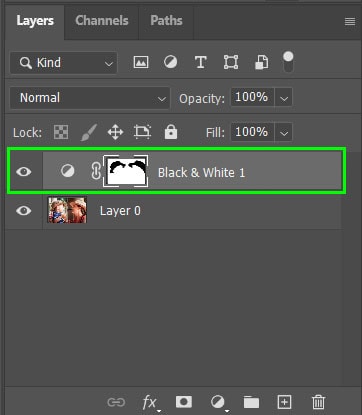
If you want to brand sure colors stand out while making the rest of your photo black and white, be sure to check out this Photoshop activity which allows you to do the previous steps in a unmarried click! It's 1 of the best means to isolate colors without spending a lot of time editing.
Making Specific Colors Blackness And White
You can choose sure colors to remain in your image while the remainder of the image turns black and white. This creates pops of colour in certain places on the photo.
To brand specific colors black and white, you need to choose which color range to keep saturated while the balance are converted. Start by adding a Hue/Saturation adjustment layer past selecting information technology from the Adjustments panel.

You can besides select information technology by clicking on the adjustment icon at the lesser of the Layers panel and choosing "Hue/Saturation…".
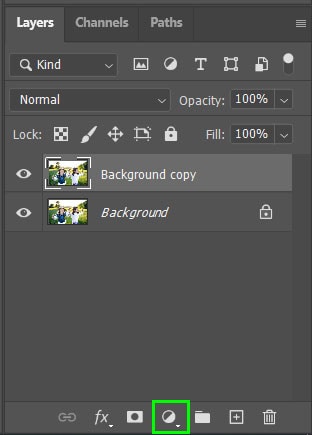
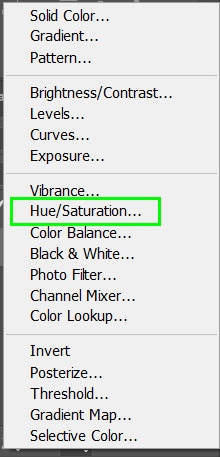
One time the aligning layer is selected a new layer volition appear in the Layers panel. The Properties panel higher up the Layers panel will show options to adjust the new layer. In this panel select the Masks icon. Then select the Colour Range option.
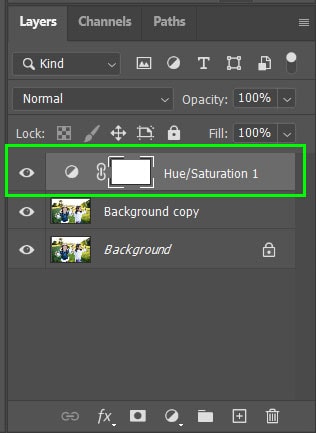
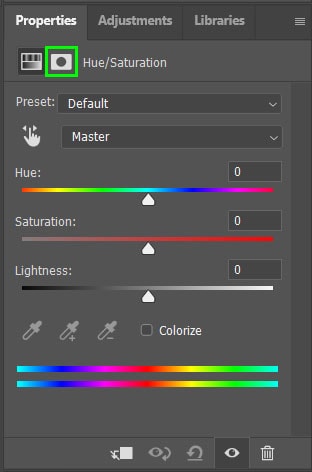
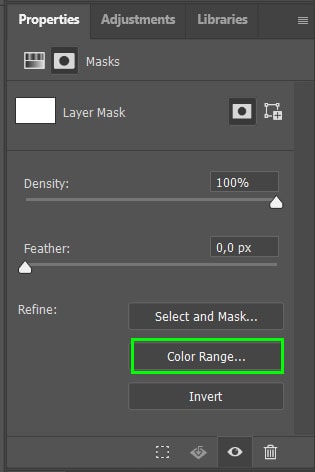
A window will open to allow you lot to cull the colour range you would like to keep in colour. Click on the drib-down arrow next to "Select:" and cull the Skin Tones option.
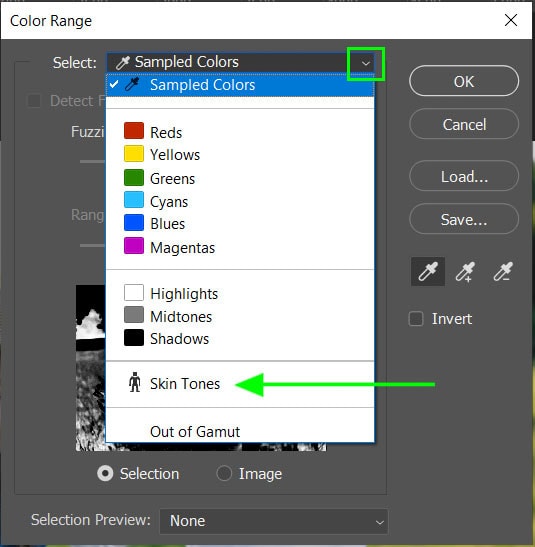
In the same window select the cake side by side to "Invert" to create a choice over all the other colors in the image. Select OK to utilise the selection.
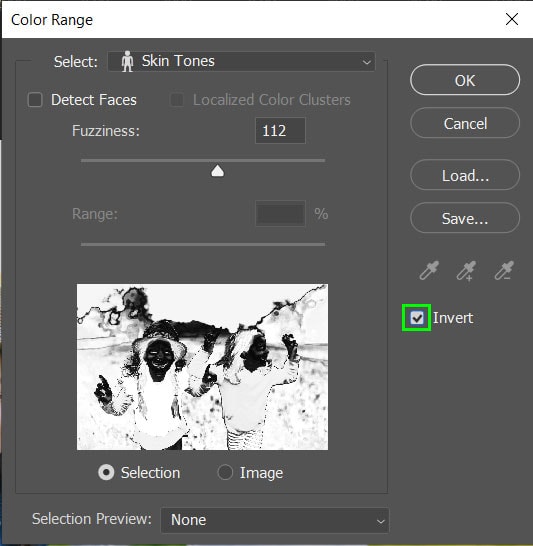
Click on the Hue/Saturation icon to navigate dorsum to the properties for the adjustment layer.
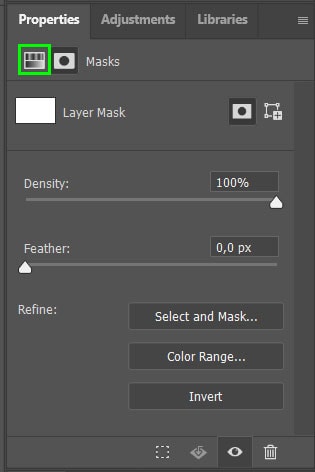
Elevate the saturation slider to the left until information technology reaches -100. This will remove the color in the image from all the areas except for where there are pare tones present. This method doesn't requite yous much control over the selected areas.
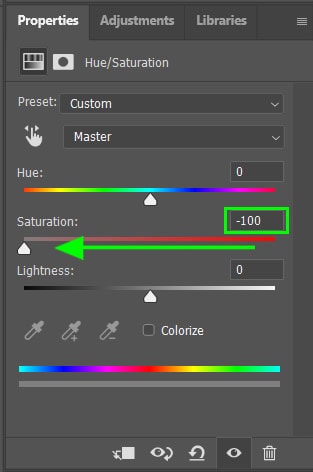

If the color range has picked up any incorrect colors or kept colors in areas yous didn't want, you can brush these out. The aligning layer volition automatically take a layer mask to show where the bottom layer is notwithstanding visible.
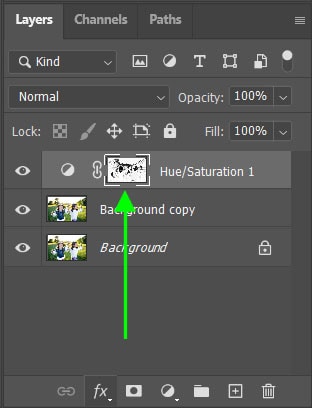
Select the castor tool from the toolbar and make certain the foreground color is set to white. White will hide pixels from the layer beneath the layer mask while black will reveal pixels.


Click and drag the brush tool over the areas you want to be converted to blackness and white. For instance, the pink from the child'due south pants and hair ties are now black and white instead of pink.
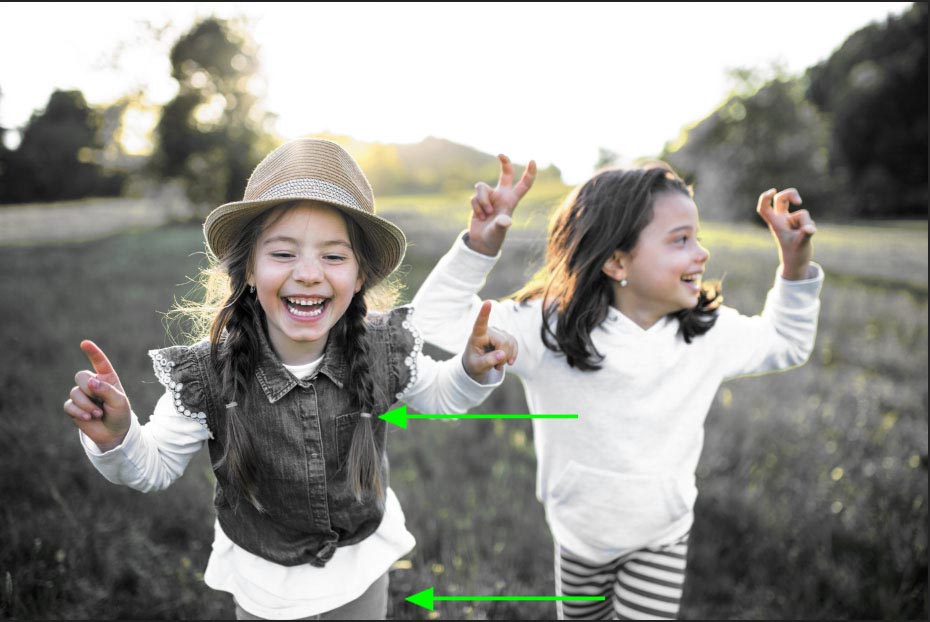
How To Desaturate An Unabridged Photo Or Layer In Photoshop
Another quick method of converting your paradigm to black and white is to desaturate the unabridged image. To desaturate a photo select Paradigm > Adjustments > Desaturate or press Shift + Command + U (Windows) or Shift + Command + U (Mac).
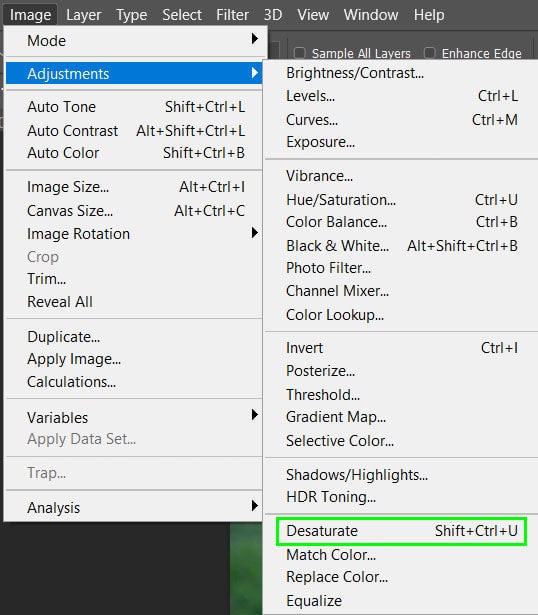
This will convert the layer to blackness and white by removing all the colors from the image. You volition discover that there is no new layer created in the Layers panel since the change is directly applied to the epitome layer.


The desaturation method is quick and like shooting fish in a barrel without the demand for adjustment layers. Layers can get confusing for beginners using the program and information technology is sometimes easier to just direct edit the layer.
Using the desaturation method prevents you from changing the adjustment as you would be able to when creating a new adjustment layer.
This method will also limit the editing capabilities and information technology becomes a form of subversive editing. This ways you lot will not be able to remove this edit later on in the project without deleting all your progress.
With these options for turning your images to blackness and white in Photoshop, you can pick whatever method works all-time for you. If yous are wanting to isolate colors in Photoshop, make sure to check out my Color Splash Photoshop Activity that allows you lot to isolate colors in a single click.

Happy Editing!
Source: https://www.bwillcreative.com/how-to-make-a-layer-or-photo-black-and-white-in-photoshop/
Posted by: volkertthaveng1970.blogspot.com

0 Response to "How To Make A Photoshop Layer Black And White"
Post a Comment